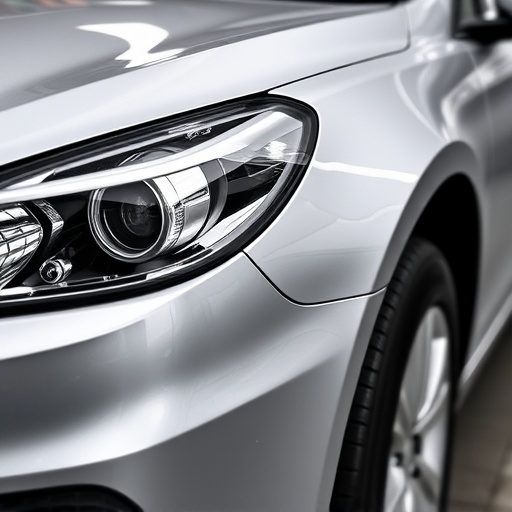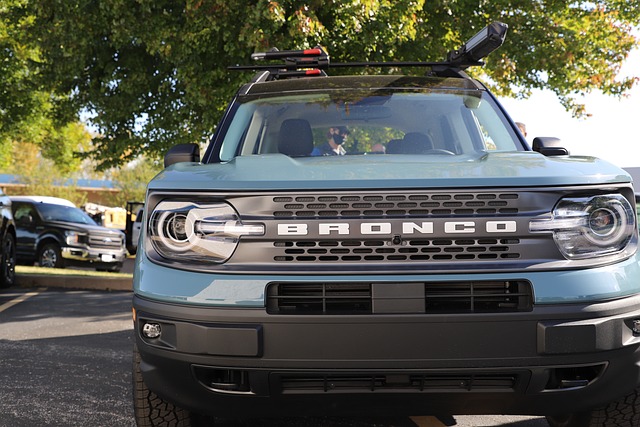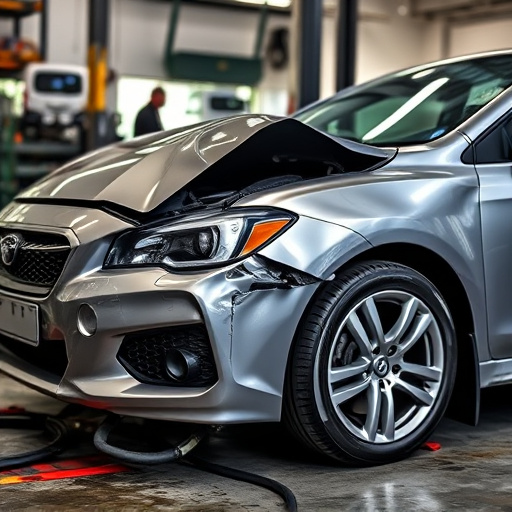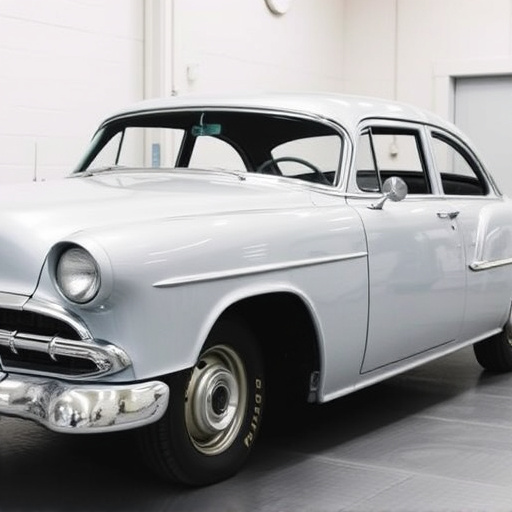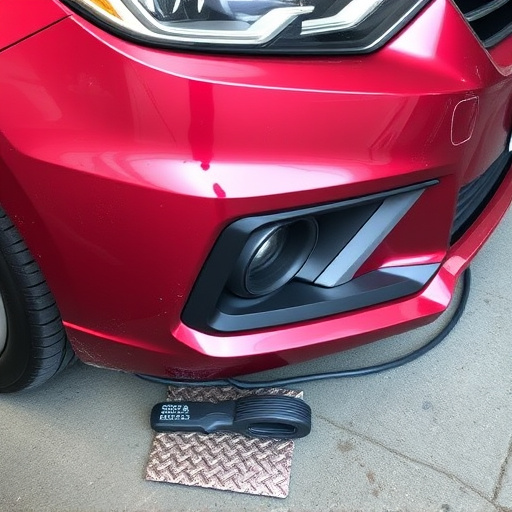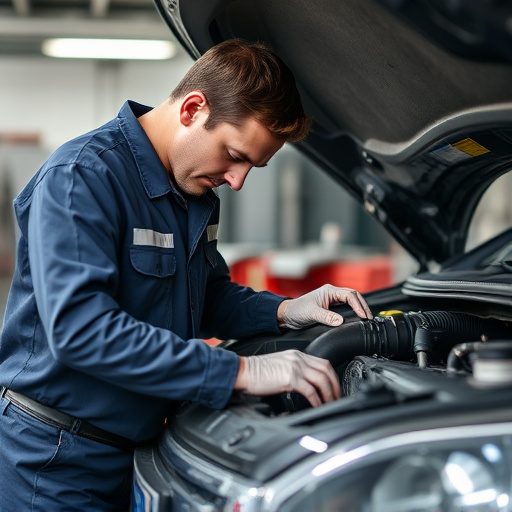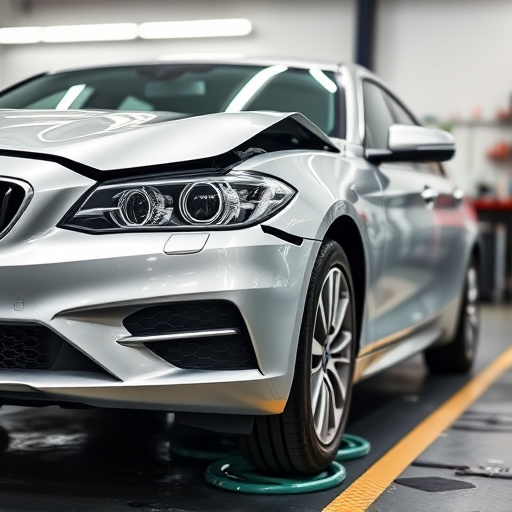Silicon bronze welding combines the strength and conductivity of silicon bronze with precision welding techniques, creating durable joints ideal for automotive repairs and harsh conditions. While challenging to weld with aluminum due to compatibility issues like porosity and weak strength, careful preparation and de-oxidization ensure robust bonds in critical applications like collision repair. This versatile process is valuable for industries demanding strong, long-lasting welds, enhancing corrosion resistance and lightweight properties in manufacturing and vehicle restoration.
Discover the potential of Silicon Bronze Welding for aluminum parts. This technique, though less common than traditional methods, offers unique advantages in specific applications. Our guide explores the fundamentals of Silicon Bronze Welding, delving into compatibility issues between aluminum and silicon bronze while highlighting its benefits and diverse uses. By understanding these factors, you’ll gain valuable insights for informed decision-making in your welding projects.
- Understanding Silicon Bronze Welding Basics
- Compatibility Issues: Aluminum and Silicon Bronze
- Advantages and Applications of Silicon Bronze Welding on Aluminum
Understanding Silicon Bronze Welding Basics

Silicon bronze welding is a specialized technique that combines the strength and conductivity of silicon bronze with the precision and versatility of welding. This process involves fusing together two metal pieces using a specific alloy, resulting in a strong and durable joint. Silicon bronze, an alloy primarily composed of copper, tin, and silicon, offers excellent corrosion resistance and electrical conductivity, making it ideal for various applications, including those in demanding environments.
Understanding the basics of silicon bronze welding is crucial when considering its use on aluminum parts, especially in the automotive industry where precision and durability are paramount. This technique is particularly suitable for repairing or joining aluminum components, ensuring long-lasting performance. Unlike traditional welding methods, silicon bronze welding does not require extensive surface preparation, making it a preferred choice for quick and efficient car damage repair and vehicle body repair. Its ability to create strong bonds between non-ferrous metals makes it an excellent solution for maintaining the integrity of parts, even in harsh conditions, while also being cost-effective compared to some other specialized car paint services.
Compatibility Issues: Aluminum and Silicon Bronze

Aluminum and silicon bronze, while both metals with their own unique properties, don’t always play nicely together when it comes to welding. One of the primary challenges lies in their inherent compatibility issues. Silicon bronze, with its high silicon content, exhibits a lower melting point compared to aluminum. When these two metals are joined through welding, the differing thermal properties can lead to problems like porosity and weak weld strength. This is particularly relevant in applications such as automotive collision repair or vehicle bodywork, where ensuring robust and lasting welds is crucial for structural integrity and paintless dent repair techniques.
Furthermore, aluminum has a tendency to form an oxide layer on its surface when exposed to oxygen, creating a barrier that can hinder the fusion process during welding. Silicon bronze, with its ability to wet and spread over aluminum, might not be able to effectively penetrate this protective oxide layer, resulting in weak connections. These challenges underscore the need for careful preparation, including proper cleaning and de-oxidizing techniques, before attempting silicon bronze welding on aluminum parts to ensure the best possible bond strength.
Advantages and Applications of Silicon Bronze Welding on Aluminum

Silicon bronze welding offers several advantages when it comes to aluminum parts. This unique welding process combines the excellent corrosion resistance and strength of silicon bronze with the lightweight nature of aluminum, making it ideal for various industries. The resulting welds are known for their high integrity, ensuring structural soundness and longevity, which is crucial for demanding applications like automotive components and vehicle restoration projects.
One of its key applications lies in car scratch repair and auto maintenance. The method’s precision allows for intricate repairs on aluminum body panels, preserving the original aesthetics of vehicles. Moreover, silicon bronze welding is well-suited for manufacturing processes, where high-quality welds are required to assemble lightweight yet durable vehicle frames and components, contributing to fuel efficiency gains in modern cars.
Silicon bronze welding presents a promising alternative for joining aluminum parts, offering several advantages such as excellent corrosion resistance, strong bond strength, and aesthetic appeal. Despite initial compatibility concerns between the two materials, proper techniques and understanding can lead to successful welds. As this method continues to gain traction in various industries, further research and development will help unlock its full potential, making it a reliable game-changer for aluminum fabrication.

